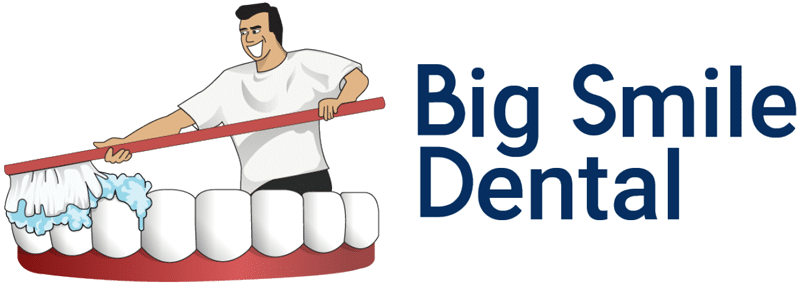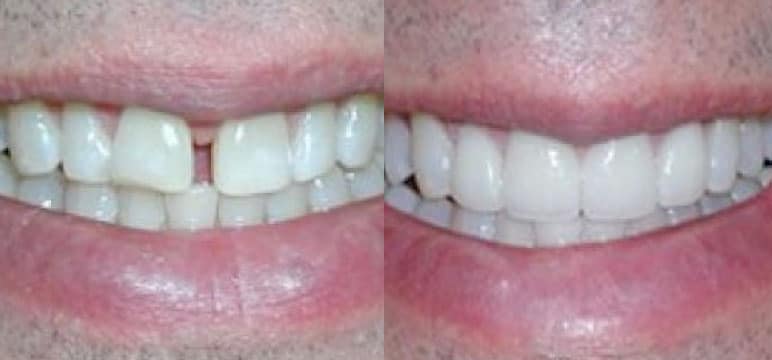
What are Braces?
Braces are orthodontic devices dental experts use at Big Smile Dental in Chicago, IL, to correct misaligned teeth and jaws, enhancing oral function and aesthetics. Comprising brackets attached to each tooth and connected by wires, braces apply continuous pressure over time to slowly move teeth into the desired position. This process not only improves the appearance of your smile but also contributes to better oral health. Braces can correct many dental issues, including overcrowding, gaps, overbites, underbites, and crossbites. The treatment duration varies depending on the individual’s needs but typically ranges from one to three years, followed by using a retainer to maintain the teeth’s new position.
What are My Options?
Metal Braces/Traditional Braces
Metal braces, often traditional braces, are a reliable and effective orthodontic treatment. They consist of high-grade stainless steel brackets and wires visible on the teeth’ front. Metal braces are especially beneficial for correcting more complex dental issues and are typically more cost-effective than other braces. At Big Smile Dental, we ensure that our patients receive the highest quality care and materials, making traditional braces durable and efficient for achieving a perfect smile.
Ceramic Braces
Ceramic braces offer a less noticeable alternative to traditional metal braces. They function similarly but feature brackets made of clear or tooth-colored ceramic material, blending in with the natural color of your teeth. This option is popular among adult patients at Big Smile Dental who prefer a more subtle orthodontic treatment. While ceramic braces are less visible, they require more attention to oral hygiene, as the brackets can stain without proper care.
Lingual Braces
Lingual braces are a unique orthodontic solution available at Big Smile Dental. These braces are attached to the back side of the teeth, making them completely invisible from the front. Lingual braces are custom-made to fit the individual contours of your teeth, providing a discreet way to correct misalignments. They are ideal for patients who are conscious about the appearance of braces but require the strength of traditional orthodontic treatment.
Invisalign
Invisalign, offered at Big Smile Dental, is a modern alternative to traditional braces. It uses a series of clear, removable aligners to straighten teeth. Invisalign aligners are custom-made and virtually invisible, providing a discreet treatment option. They are also removable, allowing for easier eating and cleaning. Invisalign is popular for those who prefer a less noticeable, more convenient orthodontic solution.
Self-Ligating Braces
Self-ligating braces are a modern orthodontic option in metal and explicit/ceramic materials. These braces function similarly to traditional metal and ceramic braces, employing brackets and a wire to reposition teeth and correct alignment gently. However, the distinguishing feature of self-ligating braces lies in their innovative mechanism for holding the wire in place.
Unlike traditional braces that use elastic rubber ties to secure the wire, self-ligating braces utilize small doors or clips within the bracket system. These doors or hooks create a more efficient and friction-reducing method for maintaining consistent pressure on the teeth, allowing smoother movement.
Understanding the Mechanics of Tooth Movement with Braces
Braces work by employing a gradual and consistent application of pressure on your teeth. This sustained pressure prompts a series of remarkable changes in your oral structure, gradually shifting the position of your teeth and altering the shape of your jaw.
At first glance, it may seem perplexing to envision how teeth, seemingly fixed in place, can be moved. However, beneath the surface of your gums lies a crucial element: a membrane enveloped by bone. This membrane is the connective foundation that securely anchors your teeth to your jaw. It plays a pivotal role in orchestrating the alignment of your teeth and possesses the remarkable ability to respond to the gentle yet persistent force exerted by your braces.
As your braces apply consistent pressure to your teeth, this remarkable membrane undergoes a transformative process. It gradually allows the teeth to shift, accommodating the pressure and facilitating repositioning. Simultaneously, the bone that encases this membrane adapts to the changing alignment of your teeth, ensuring a secure and stable foundation for their new positions.
The intricate interplay between the braces’ pressure, the responsive membrane, and the adaptable bone enables the gradual movement of your teeth. Over time, as this process unfolds, you’ll witness the remarkable transformation of your smile as your teeth shift into their desired alignment, resulting in a straighter, healthier, and more aesthetically pleasing dental configuration.
What are the Benefits of Dental Braces?
Dental braces, beyond improving the aesthetics of your smile, offer numerous health benefits. They help correct bite issues, reducing the risk of jaw pain, TMJ disorders, and uneven wear on the teeth. Straight teeth are easier to clean, reducing the risk of cavities and gum disease. Braces can also improve speech and chewing functionality. At Big Smile Dental, we emphasize that braces are an investment in your overall oral health, contributing to a healthier mouth and a more confident smile.
What are the Normal Side Effects of Braces?
While braces are highly effective in aligning teeth, they can cause temporary side effects. Everyday experiences include mild discomfort or soreness after adjustments, which typically subside within a few days. Patients may also encounter minor irritations inside the mouth as it adjusts to the braces. Rarely, some may experience difficulty in speaking or chewing initially. At Big Smile Dental, we provide comprehensive guidance on managing these side effects, ensuring a comfortable and successful orthodontic journey.
Recovery and Outlook: Your Braces Experience
What Happens During Your Initial Consultation?
Your journey to a perfect smile with braces at Big Smile Dental in Chicago, IL, begins with an initial consultation. This is a critical step where our skilled orthodontists assess your dental structure and discuss your orthodontic needs. We use advanced imaging techniques to get a detailed view of your teeth and jaw, ensuring a customized treatment plan. This session is also an opportunity to express your dental goals and concerns, allowing us to tailor the treatment to your needs and lifestyle. Our team ensures you are fully informed and comfortable with the proposed treatment plan.
Do Braces Hurt?
Many patients at Big Smile Dental inquire about the comfort level associated with braces. Initially, when braces are first applied or adjusted, you may experience some discomfort or mild soreness. This sensation is normal and typically subsides within a few days. It’s a sign that the braces are effectively working to realign your teeth. Our team provides comprehensive guidance on managing discomfort, ensuring your orthodontic journey is as smooth and pain-free as possible.
How Should I Care for My Braces?
Caring for your braces is crucial for achieving the best results and maintaining oral health. At Big Smile Dental, we emphasize the importance of regular brushing and flossing to prevent plaque buildup around the brackets and wires. Gently brush around each frame and the gum line using a soft-bristled toothbrush and fluoride toothpaste. Flossing daily with a floss threader or orthodontic flosser helps remove food particles and plaque between teeth and underwires. Additionally, it’s essential to avoid hard, sticky, or chewy foods that can damage your braces. Regular check-ups and cleanings at our clinic are necessary to monitor progress and address any issues promptly. Our team is always ready to provide tips and tools to make caring for your braces easier.
How Can I Maintain My Results After Braces?
Maintaining your beautiful smile after braces is a lifelong commitment. At Big Smile Dental, we stress the importance of wearing a retainer as directed. Retainers help strengthen your teeth’ new position after the braces are removed. Initially, you may need to wear your retainer all the time, but over time, you’ll shift to wearing it only at night. Regular dental check-ups are crucial for monitoring your post-braces dental health. Maintaining good oral hygiene practices, including regular brushing and flossing, will help preserve your results. Our team is committed to guiding you through the post-treatment phase, ensuring your smile remains straight and healthy for years.
If you’re interested in more information about dental veneers or other dental restorative options, call Big Smile Dental today! Our team is happy to schedule a consultation at a time that works with your schedule.
Your new smile is waiting for you!


